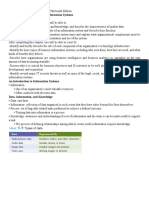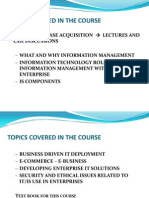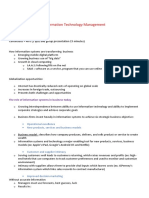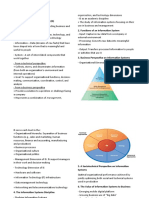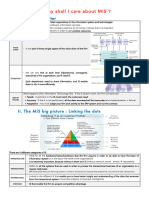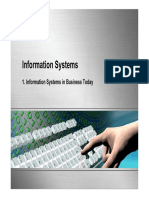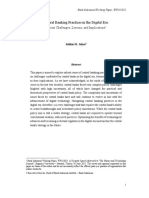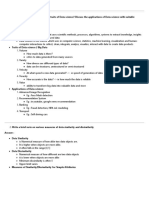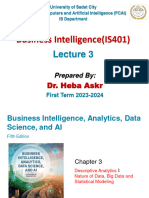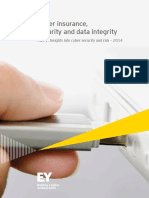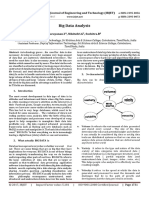0% found this document useful (0 votes)
36 views2 pagesNotes
The document outlines the components and types of Information Systems (IS), including hardware, software, data, people, and processes, as well as various systems like Transaction Processing Systems and Customer Relationship Management Systems. It discusses digital platforms, their characteristics, and the implications of digital transformation, along with concepts like business intelligence, big data, and organizational change due to IT adoption. Additionally, it covers models such as client-server and peer-to-peer, highlighting their advantages and limitations.
Uploaded by
saniya3737Copyright
© © All Rights Reserved
We take content rights seriously. If you suspect this is your content, claim it here.
Available Formats
Download as PDF, TXT or read online on Scribd
0% found this document useful (0 votes)
36 views2 pagesNotes
The document outlines the components and types of Information Systems (IS), including hardware, software, data, people, and processes, as well as various systems like Transaction Processing Systems and Customer Relationship Management Systems. It discusses digital platforms, their characteristics, and the implications of digital transformation, along with concepts like business intelligence, big data, and organizational change due to IT adoption. Additionally, it covers models such as client-server and peer-to-peer, highlighting their advantages and limitations.
Uploaded by
saniya3737Copyright
© © All Rights Reserved
We take content rights seriously. If you suspect this is your content, claim it here.
Available Formats
Download as PDF, TXT or read online on Scribd
/ 2


